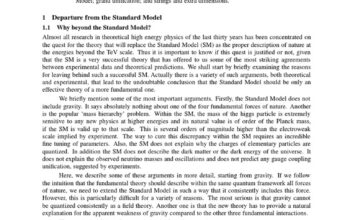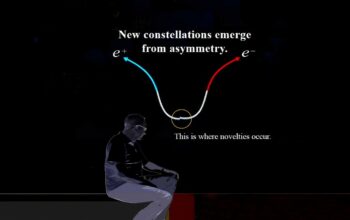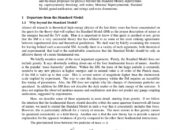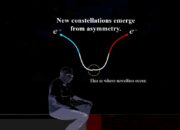The enigmatic realm of dark matter continues to elude the grasp of contemporary physics, despite extensive theoretical and experimental efforts aimed at its elucidation. Recent advancements suggest that the study of excess electrons may provide unexpected insights into the elusive properties of dark matter. This exploration advocates for a shift in prevailing perspectives, provoking inquiries that intertwine the known with the unknown, and promising to uncover a multitude of nuanced aspects of the universe.
Dark matter, constituting approximately 27% of the cosmos, does not emit, absorb, or reflect light, rendering it imperceptible to conventional observational instruments. It interacts primarily through gravitational means, leading researchers to investigate its presence through astrophysical phenomena. The enigmatic nature of dark matter has urged scientists to postulate various candidate particles, such as Weakly Interacting Massive Particles (WIMPs) and axions. Yet, the quest for evidence remains inefficacious, compelling the scientific community to consider alternative methodologies and theories.
A burgeoning area of focus is the investigation of excess electrons produced during cosmic events. These charged particles may serve as a conduit, revealing the symbiotic relationship between normal and dark matter. The detection of an anomalous excess of electrons in specific astrophysical environments, such as the vicinity of supernova remnants and cosmic ray interactions, raises critical questions about their origin and connection to dark matter behaviors.
Numerous experiments, leveraging advanced particle detectors and astronomical observations, have reported indications of excess electrons. Cosmic rays colliding with interstellar gas and dust can yield an influx of high-energy electrons, which subsequently traverse vast distances. Observations from the Fermi Gamma-ray Space Telescope have led to the identification of diffuse gamma-ray emissions, potentially linked to dark matter interactions, and deserving of scrutiny in conjunction with electron studies. Herein lies the crux of the inquiry: do these excess electrons act as potential signatures or byproducts of dark matter annihilation or decay?
To unravel these associations, one must appreciate the decoupling of excess electrons from traditional astrophysical models. Frequently, these excesses have been dismissed or inadequately explained through known processes, such as supernova activities or pulsar emissions. Yet, the interconnectedness of all matter necessitates a reconsideration. If excess electrons emerge from areas of high dark matter density, perhaps as a result of annihilation processes, a profound paradigm shift in dark matter research emerges.
This reconceptualization calls for robust statistical analysis to decipher the consistency of observations across diverse astrophysical contexts. High-energy electron emissions, juxtaposed with gravitational lensing and galaxy rotation curves, could furnish substantial corroborative evidence. Long-held assumptions regarding the homogeneous distribution of dark matter may require reassessment, opening the pathway for a more intricate understanding of its spatial variations.
Furthermore, the implications extend beyond observational astronomy. Fundamental physics could experience a renaissance inspired by this inquiry into excess electrons. A comprehensive analysis may provide valuable constraints on candidate particles and their interactions. For instance, if a correlation between surplus electron production and specific dark matter particles emerges, it could facilitate the development of novel detection methodologies, enabling scientists to probe theoretical frameworks previously considered inscrutable.
In addition to reshaping existing paradigms and enhancing particle physics, the study of excess electrons as potential dark matter indicators can pique curiosity among broader audiences. Engaging the public in discussions surrounding the implications of dark matter and its subatomic interplay fosters a more informed society regarding overarching cosmological narratives. Invoking multidisciplinary collaboration across physics, astronomy, and philosophy may also elucidate the profound implications of these discoveries.
Moreover, recent technological advancements in particle detection, computational modeling, and high-energy astrophysics render this investigation not only feasible but ripe for exploration. The availability of sophisticated simulations can enhance our understanding of particle formation and decay in high-energy environments, acting as a crucible for testing theoretical predictions against observed data. This synergy between theoretical frameworks and empirical evidence is paramount in refining our conception of dark matter’s role in the universe.
As the quest for dark matter continues, the focus on excess electrons invites a critical reevaluation of long-standing assumptions. It underscores the importance of interdisciplinary approaches and innovative methodologies in fundamental research. By embracing an open-minded inquiry into these electrically charged particles, the scientific community has the potential to unravel the fabric of the universe, revealing the threads that connect the observable and the unseen.
In conclusion, the exploration of excess electrons not only inspires new hypotheses but also beckons a better understanding of the intricate tapestry of cosmic phenomena. By bridging the realms of established knowledge and uncharted territory, this path holds the promise of illuminating the hidden intricacies of dark matter and, ultimately, redefining our cosmic narrative.












